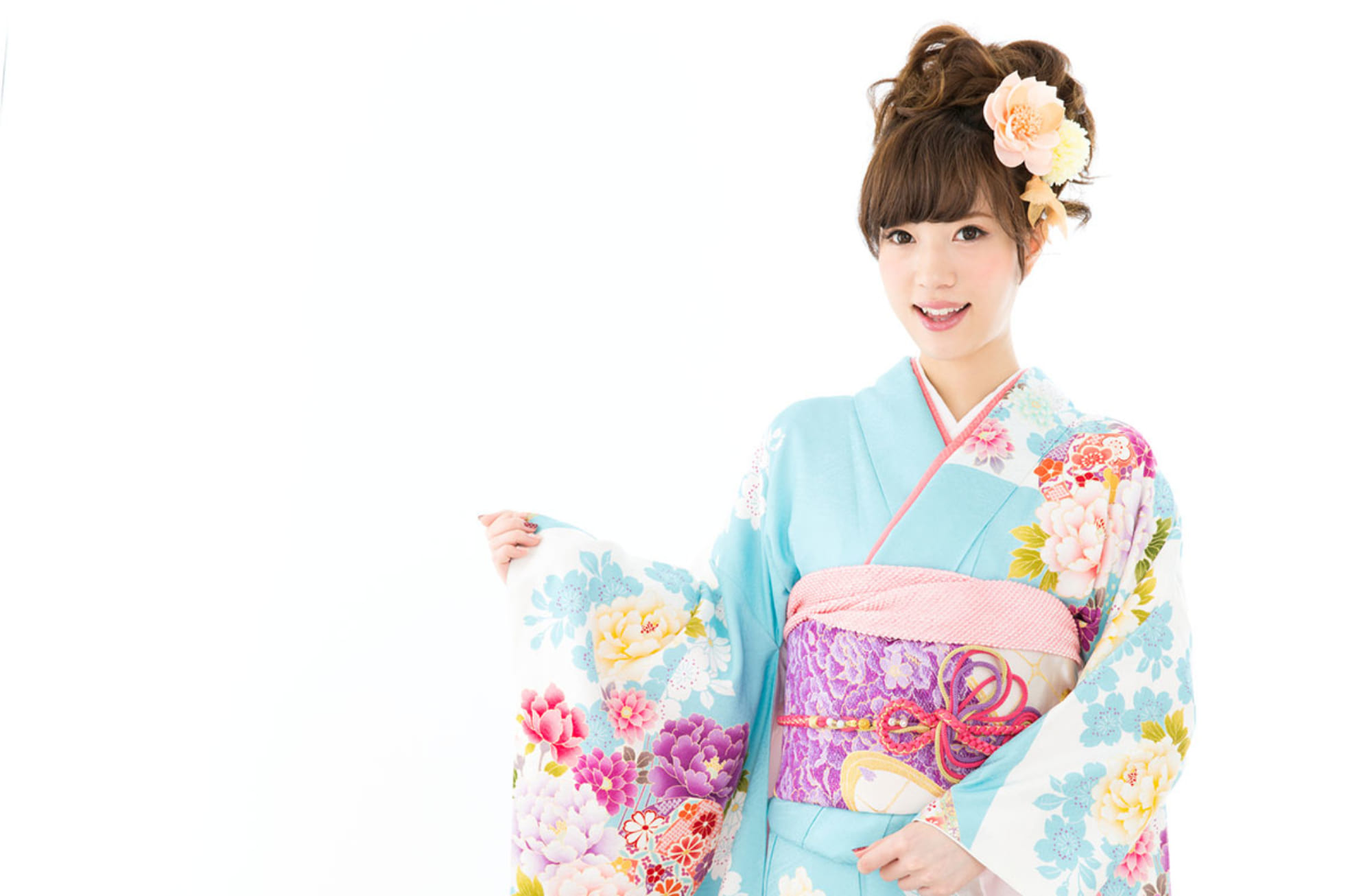Karaori ( Chinese weaving )
While the name suggests that it came from China, karaori is believed to have been invented in Japan.
The woven design stands out from the weft and looks similar to embroidery, creating a luxurious fabric. The three-harness twill is woven in different colors which stands out against the background.
Karaori kimonos are elaborate outfits worn by Noh performers in women roles and as uchikake (bridal robe) for women of high status in a samurai family. There are two types of karaori costumes – iroiri (with red) and ironashi (without red). Iroiri is worn when portraying younger characters while ironashi is for older characters. The kimono is also worn differently for different characters. For example, tsubo-ori, where the karaori is tucked up at the waist, depicts a woman of high status.
Patterns such as autumn foliage and literary designs such as Genji Monogatari are forund on the fabric. Edo period fabrics displayed at museums indicate that identical patterns were made in different colors.
[quote style=”boxed”]In Japanese
唐織
中国の唐から輸入したことで唐の織物の意味ですが、日本で発明された技法と考えられています。
模様を織り出すのは緯糸で表面に浮いたようにみえるのでまるで刺繍をしたかのように豪華になります。経三枚の綾地の織りの組織に、様々な色の緯糸で立体的な模様を多彩に表します。
能の女役の表着の装束や、武家の身分の高い女性が打掛けとして着る最も絢爛豪華なものでした。能装束としての唐織は、紅色のあるなしで紅入り、紅なしと呼ばれ、若役と老役で着用を分けるきまりがあります。着方にも役柄で異なり、腰の部分で折り込み短くして着る壺折りは、身分の高い女性を表します。
模様は女性の舞台衣装として華やかに、秋草などの植物や源氏物語などの文学的意匠もみられます。同一の模様でありながら配色の異なる織物として複数製作することができることが、美術館や博物館所蔵の江戸時代の作品からもうかがい知ることができます。
[/quote]
